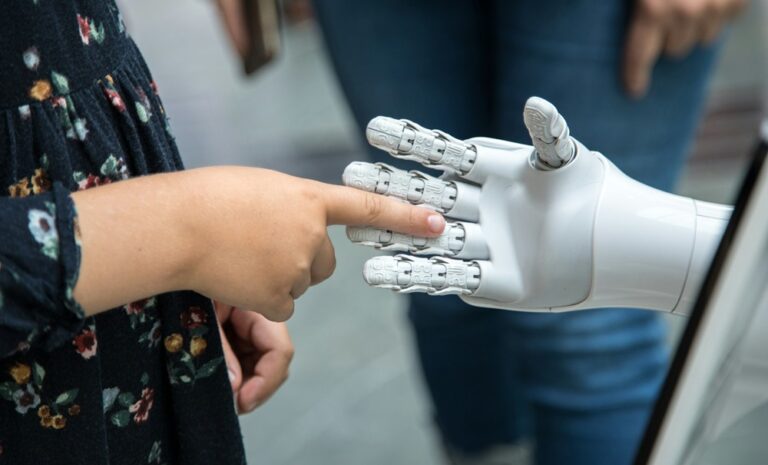Every few years, a new wave of technology changes the way we live and work. But few revolutions have evolved as rapidly – or as profoundly – as artificial intelligence. From writing assistants and image generators to automated business tools, AI has become part of our daily routines. It’s efficient, fast, and increasingly capable. Yet beneath the algorithms and neural networks lies an undeniable truth: AI still needs people. The intelligence we see in these systems doesn’t exist in a vacuum; it’s built, refined, and constantly guided by human expertise. If you’ve ever wondered how this collaboration really works, and why the human role in AI remains irreplaceable, take a look at Outlier’s perspective on how people with expertise is shaping the future. It’s a fascinating look at how contributors from different fields are helping define the next chapter of artificial intelligence, ensuring it learns from, and for, us.
The Myth of Total Automation
The idea that machines will one day replace humans entirely is as old as automation itself. Popular media often amplifies that narrative, painting AI as an unstoppable force poised to take over creative, analytical, and even emotional tasks. But the reality is far more collaborative and far more hopeful.
Artificial intelligence may process data at lightning speed, but it lacks the depth of understanding, empathy, and moral reasoning that humans bring. It can recognize patterns, yet it doesn’t grasp meaning the way a person does. It can summarize information, but it cannot truly interpret intention, culture, or emotion. That’s why every breakthrough in AI – whether it’s a conversational model, an image classifier, or an autonomous system – still depends on human insight to make sense of what the machine learns. This principle is known as “human-in-the-loop.” It’s the foundation of responsible AI development: humans training, testing, and correcting models to ensure accuracy, fairness, and relevance. Without that guidance, AI systems risk misunderstanding nuance or amplifying bias. In other words, automation may be powerful, but without human involvement, it’s incomplete.
The Irreplaceable Role of Human Judgment
No matter how sophisticated a model becomes, it still reflects the data it was trained on, and that data comes from people. Every dataset, annotation, and evaluation represent a human decision: what to include, how to interpret it, and which context matters most. That human judgment is the invisible architecture behind intelligent systems. When a natural-language model learns to detect sarcasm or empathy, it does so because human contributors label examples and explain subtle distinctions. When a vision model learns to differentiate a medical scan or a cultural artifact, it relies on experts who understand meaning beyond pixels. And when an algorithm is evaluated for fairness or inclusivity, it’s humans who ensure that no group is left behind or misrepresented.
Therefore, platforms like Outlier are so vital to the AI ecosystem. They connect skilled freelancers and professionals (from linguists and engineers to educators and analysts) with real AI projects that rely on human expertise. Through their work, contributors help AI systems evolve responsibly, ensuring that technology serves people, not the other way around. As Outlier often emphasizes, collaboration isn’t just a step in AI development: it’s the safeguard that keeps it aligned with human values. In fact, some of the most significant challenges in AI today – from bias reduction to contextual reasoning – can only be solved by combining computational efficiency with human judgment.
The Irreplaceable Role of Human Judgment
AI is at its best when it amplifies human capabilities rather than replacing them. Imagine a content editor who uses AI to summarize research, freeing time for creative analysis; or a data scientist who collaborates with an AI system to detect complex correlations that would take weeks to find manually. This synergy doesn’t diminish human skill, but it enhances it.
In that sense, the rise of AI should not be seen as a threat to human work, but as an invitation to reshape it. The professionals who thrive in this new era are those who learn to work with AI, not compete against it. Whether you’re a freelancer, a researcher, or an entrepreneur, understanding how to guide and interpret AI can open doors to entirely new opportunities.
And this is precisely where platforms like Outlier make a difference. They bridge the gap between human intelligence and machine learning by providing structured, ethical, and collaborative frameworks for contributors. Through these systems, people from all walks of life can take part in training AI models, transforming their unique knowledge into meaningful technological progress.
Why AI Still Needs Us
As AI takes on more tasks, some wonder if human oversight will eventually become unnecessary. But experience has proven the opposite: the more powerful AI becomes, the more it requires ethical and contextual direction. Machines can produce answers, but they can’t define what’s right, fair, or useful in human terms. An algorithm might identify trends in language, but only a person can understand when those trends carry cultural or social implications. Or think about healthcare AI, where precision matters but empathy defines impact: only trained professionals can ensure that recommendations respect patient safety and dignity.
Therefore, human collaboration isn’t just beneficial, but it’s essential. Without ongoing human supervision, AI systems risk becoming disconnected from the people they’re meant to serve. Human expertise provides not just oversight, but purpose. It’s the compass that ensures AI advances in ways that reflect our shared values, ethics, and goals.
Building the Future, Together
The next generation of AI will be defined not by competition between humans and machines, but by their partnership. As technology continues to evolve, the most successful systems will be those that balance computational power with human understanding. Platforms like Outlier embody this philosophy by turning collaboration into a global movement. Their contributors come from dozens of countries and backgrounds, working together to make AI more accurate, transparent, and inclusive. Some are seasoned professionals; others are just beginning to explore the world of data and technology. What unites them is a shared belief that AI’s future depends on human insight.
If there’s one lesson emerging from this new era, it’s that intelligence – artificial or otherwise – thrives on diversity, context, and creativity. Machines can analyse patterns, but only humans can provide meaning. The future will belong not to the technology that replaces us, but to the technology that learns from us. So, if you’ve ever wondered what role you could play in shaping that future, start by learning more about how people with expertise is shaping the future. Because in the story of artificial intelligence, it’s still humans who write the first and most important lines.






